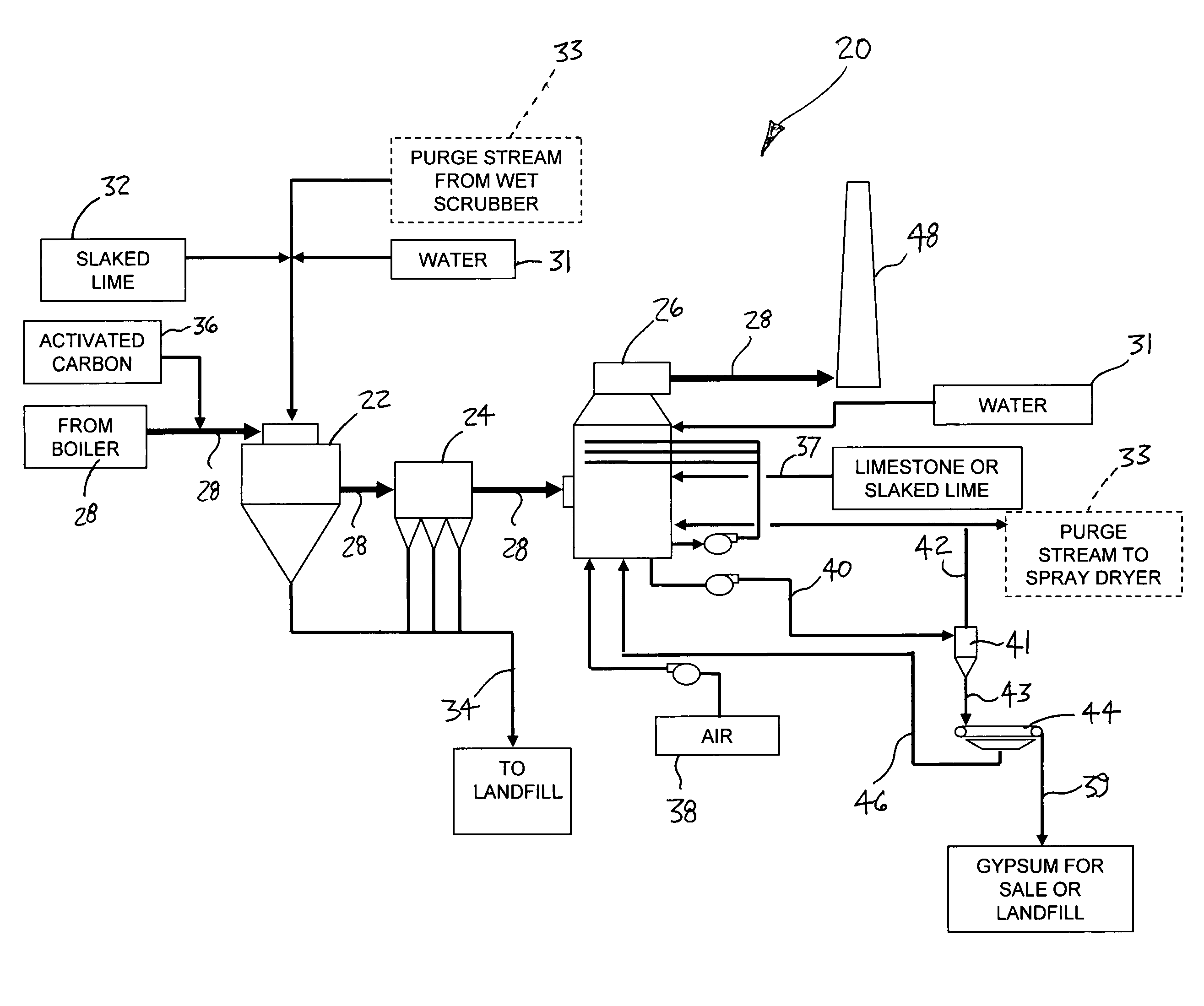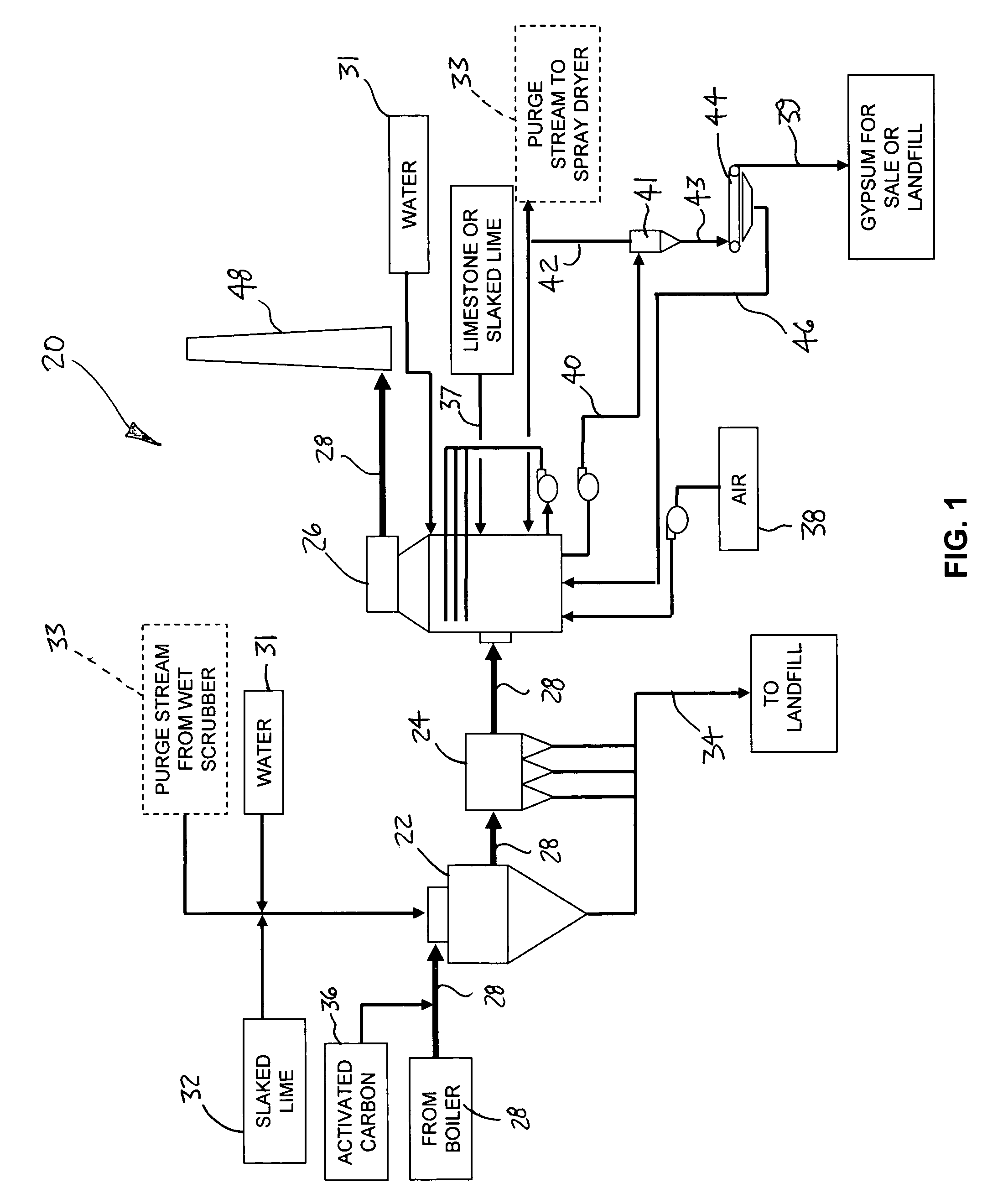Integrated dry and wet flue gas cleaning process and system
a dry and wet flue gas cleaning and integrated technology, applied in the direction of separation processes, machines/engines, lighting and heating apparatus, etc., can solve the problems of generating large quantities of sulfur oxides and other acid gases, affecting the health of people and the environment, and affecting the operation of the combustion process
- Summary
- Abstract
- Description
- Claims
- Application Information
AI Technical Summary
Benefits of technology
Problems solved by technology
Method used
Image
Examples
Embodiment Construction
[0018]Referring now to the drawings in which like reference numerals indicate like parts, and in particular, to FIG. 1, one aspect of the present invention is a process 20 of integrating wet and dry flue gas cleaning technologies. The process of the present invention includes using a spray dryer 22, a particulate collector 24, which may be a fabric filter, an electrostatic precipitator, or the like, and a wet scrubber 26 to remove sulfur oxides, other acid gases, particulate, and mercury from a flue gas 28.
[0019]In process 20, which is illustrated in FIG. 1, flue gas 28, which comes from a combustor, e.g., a boiler (not shown), first enters spray dryer 22. As used herein, flue gas 28 refers generally to any flue gas created from fossil fuel combustion and the particular constituents that make-up the flue gas are expected to vary as the flue gas is treated. While being spray dry absorbed in spray dryer 22, flue gas 28 is reacted with a slurry 30 containing water 31, an alkaline reage...
PUM
| Property | Measurement | Unit |
|---|---|---|
| size | aaaaa | aaaaa |
| corrosion resistant | aaaaa | aaaaa |
| temperature | aaaaa | aaaaa |
Abstract
Description
Claims
Application Information
 Login to View More
Login to View More - R&D
- Intellectual Property
- Life Sciences
- Materials
- Tech Scout
- Unparalleled Data Quality
- Higher Quality Content
- 60% Fewer Hallucinations
Browse by: Latest US Patents, China's latest patents, Technical Efficacy Thesaurus, Application Domain, Technology Topic, Popular Technical Reports.
© 2025 PatSnap. All rights reserved.Legal|Privacy policy|Modern Slavery Act Transparency Statement|Sitemap|About US| Contact US: help@patsnap.com



